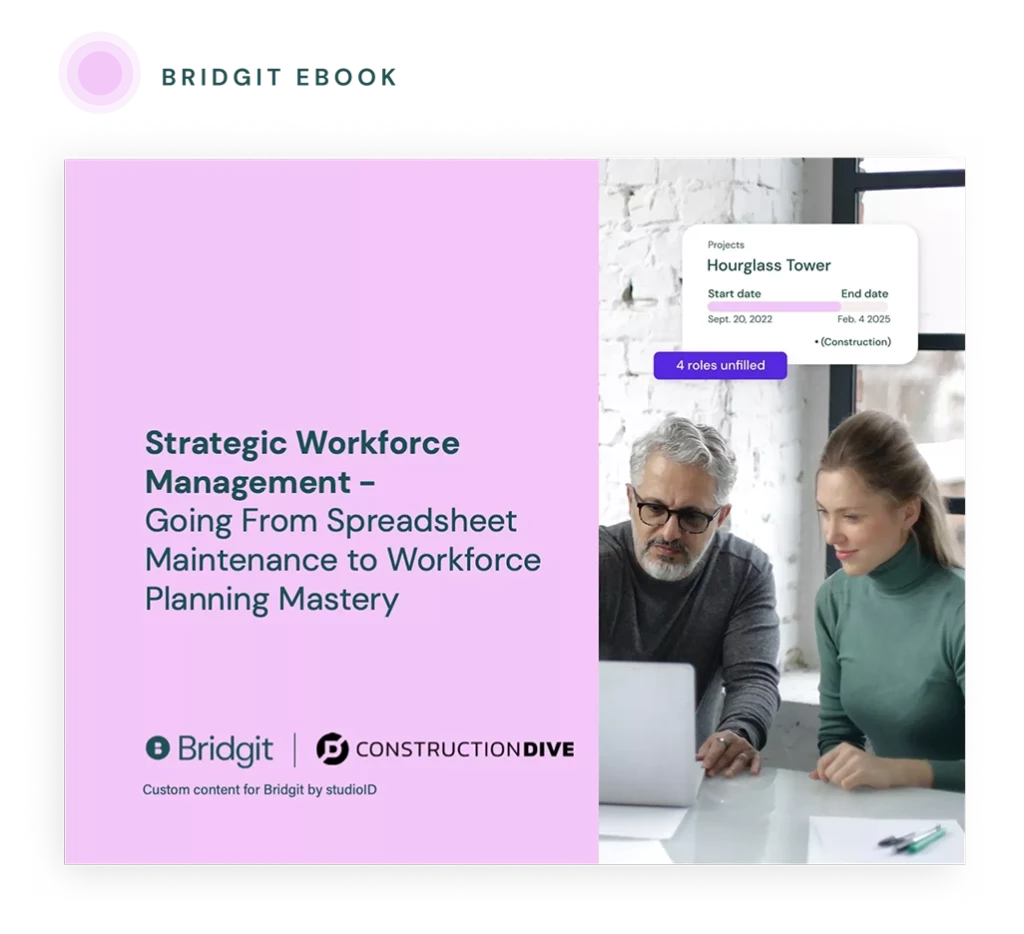A lot of business management, especially in construction, is about balance. It’s not just about balancing a project or a bunch of projects but balancing many variables you don’t necessarily have control over. One of those variables is the outlook of the economy.
We already wrote an article about how to make your construction company recession-proof, and the strategies outlined here are important to try and implement. For this article, we want to dive into a more specific strategy for mitigating economic stress. That strategy is building and balancing a backlog of projects, specifically by having an effective plan for your workforce.
Table of Contents
WHAT IS A BACKLOG AND WHAT TO EXPECT FOR 2023
The construction backlog is calculated by measuring (in dollars) the contracted work that a construction company has lined up but is yet to complete. Then, using the annual pace of construction sales, that figure is converted into months/years.
A backlog reflects the amount of contracted work yet to be completed and provides specificity regarding the level of activity being done by a contractor months and, best case scenario – years in advance.
You can calculate the construction backlog for a specific company or for the industry as a whole to try and predict where the industry is trending in the future.
The more months/years of backlog, the more confident contractors are regarding their short-term economic situation. Adversely, fewer months/years of backlog means less confident contractors working their way through their active backlog.
Construction Dive released an article at the end of 2022 with five charts hinting at what the industry should expect in 2023. The first chart outlines architecture billings, which faced a steep drop in October. There’s a lag between the drop in architectural billings and construction work. This tells us that 2023 should remain fairly strong for contractors, but 2024 and 2025 may be problematic for the industry.
The second chart outlines the construction backlog specifically. It tells us the project backlog has remained steady, and infrastructure and heavy industrial project backlogs have grown, mostly due to increased federal spending in the sector. Institutional and commercial construction did see a dip in October 2022, but again, it remains steady.

Looking to be more strategic with your people?
We partnered with Construction Dive to outline the steps any contractor can take to be more strategic with their workforce management.
WHAT DOES THIS MEAN FOR YOU?
It means you have to become a fortune teller. Just kidding, kind of. What you need to be able to do is understand industry trends and set up an appropriate backlog for your specific company so you can mitigate the risk that comes with an economic downturn. This doesn’t mean you do “survival bidding”.
In short, survival bidding happens during times of lower economic confidence. Contractors begin to worry about finding new work and, as a result, begin to bid at lower margins in an attempt to build a huge backlog in order to stay afloat.
The problem with this is two-fold. Firstly, even when you win projects, you won’t be profitable upon completion. Secondly, you run the risk of having too much work, which tells prospective clients that you can’t keep a deadline, or maybe you won’t be able to start a job nine months from now when they want it started four months from now.
We did say construction was about balance.
HOW ACCURATE WORKFORCE PLANNING CAN HELP
Having a strong strategy for your workforce will give you more predictive power for what kind of jobs you can take and when. You can begin to build a backlog that can be profitable and done effectively with minimal delays.
Workforce planning tools built for the construction industry were designed to help general contractors do more with less. While that may seem like an oversimplification of a complex process, the benefits of tools like this are amplified during times of economic downturn in the industry.
- Full project history – One of the best things a contractor can do in trying to build a profitable backlog is reference successful previous projects of similar scope. This helps to identify what worked well so it can be repeated. Whether it means identifying lean project teams that can be allocated to new projects or understanding how work ramps up and down on a project to create a tight schedule, understanding what project success looked like in the past helps one better plan for the future.
- Allocation oversight – Knowing is half the battle. Any contractor that manages their resources with spreadsheets or whiteboards knows the difficulties of tracking their workforce allocations accurately and optimizing them for productivity and profitability. These tools help contractors by providing a holistic view of their workforce allocations and insight into their workforce utilization to identify where more work can be taken on and which team members are under-allocated and costing them money.
- Forecasting – The ability to accurately forecast projects and their workforce requirements helps clarify the impact of future bids on the project pipeline. This helps general contractors identify which projects they can undertake with their available resources and also identify potential gaps in their workforce plan that need to be reworked to keep their teams as productive as possible.
- Collaboration – Workforce planning can often fall on the shoulders of one or two operations team members. The time, effort, and stress required to manage a profitable workforce strategy become amplified during times of economic distress. Having an accessible, collaborative solution allows for more team members to contribute and opens up more time for Ops Managers to fight fires and problem-solve. Speaking of problem-solving, enabling collaboration on workforce planning can also uncover new methods of problem-solving that make the difference in profitability when the project budget is tight. Read this article to learn more about the benefits of collaborative construction software.
Though a drop in project backlog can significantly impact project bidding, it’s also an opportunity for contractors to evaluate their current situation and identify core processes that help keep projects as profitable as possible. Resource and labor costs can account for up to 40% of a project’s total budget, meaning that strategic and efficient resource planning is one of the most impactful ways to increase profitability.
Think your workforce planning meetings could be more productive?
Download our ebook to learn how to run efficient, effective workforce planning meetings with your team.



